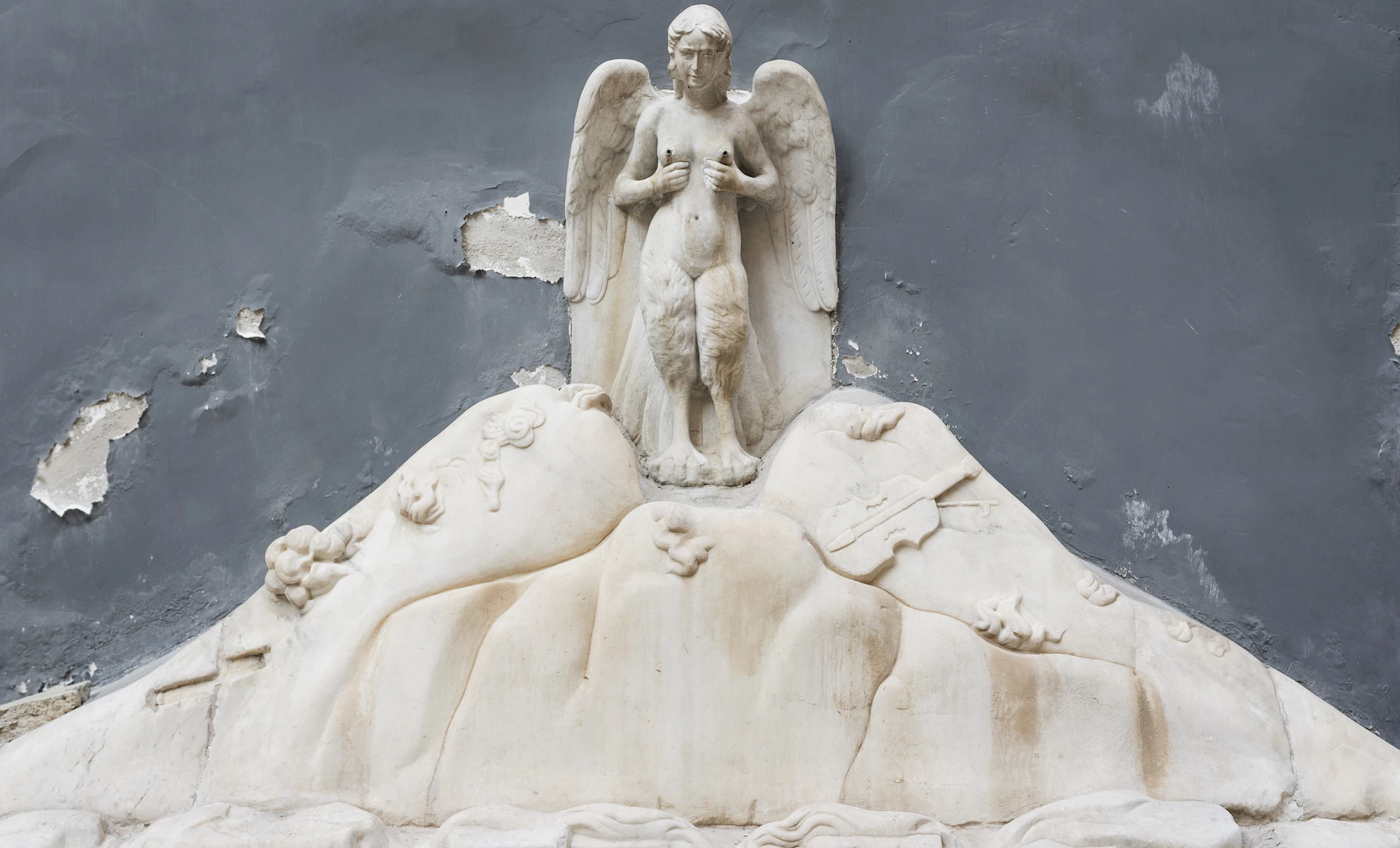Naples. Very few cities have donated to the collective imaginary such braided and deep symbologies able to cross centuries, religions and social life.
Marianna the “head of Naples” | Ph. Anna Monaco - Trentaremi
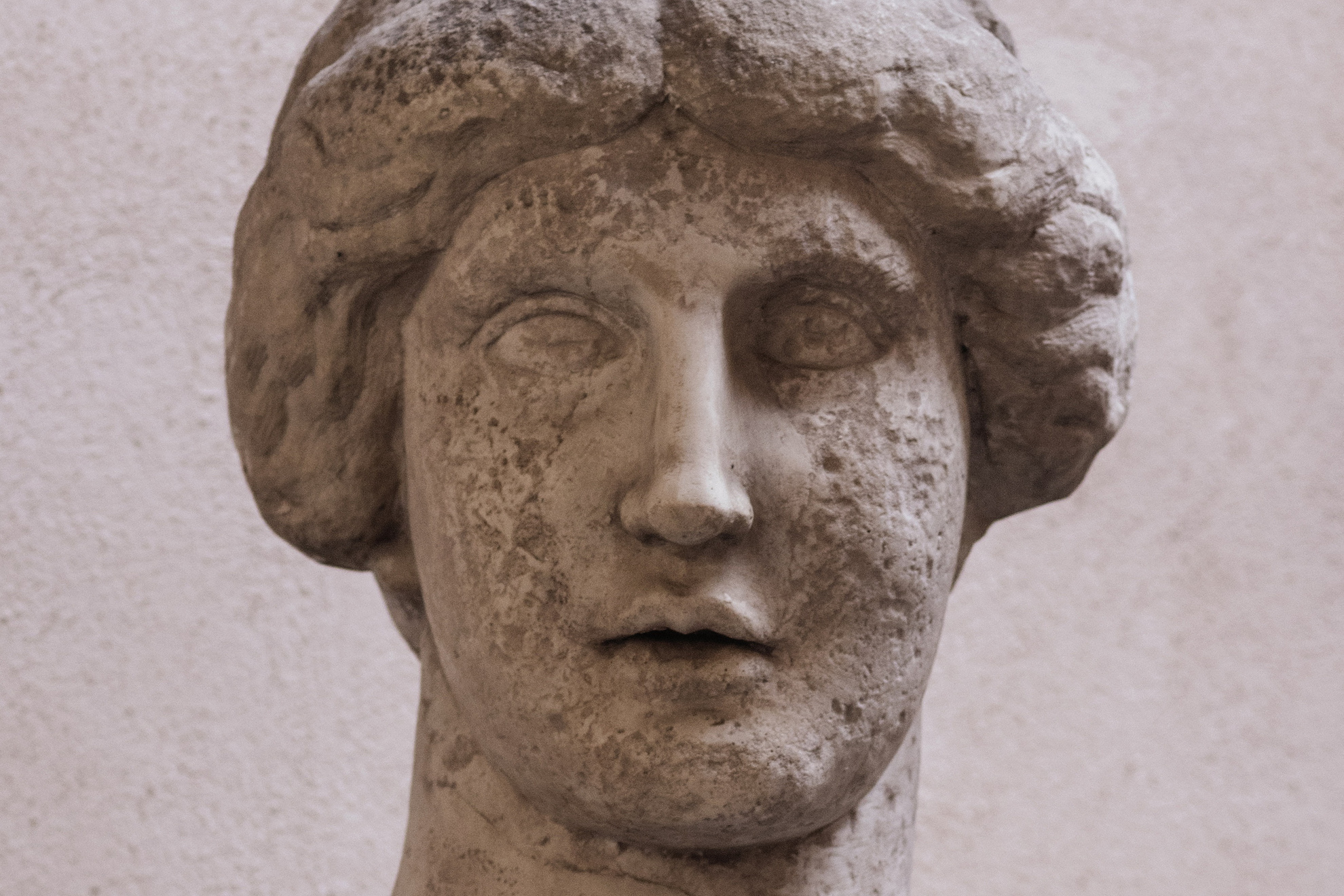
It is not a case that the entire city is identified with a mytological symbol that has its roots in ancient Greece: Parthenope the siren, suffering at cause of the indiffernce shown by Ulysses as he was listening to her chant. Parthenope let herself die not far away from the small island of Megaride that many centuries later will be identified as Borgo Marinari and Castle dell’Ovo.
The defenceless body of a siren is trasformed in its opposite and becomes symbol of life and fertility. The worship of a goddess was already known at the time of ancient Greece that on the Sant’Aniello acropolis in Caponapoli, not far away from the location of the actual Archeological Museum, built temples dedicated to Parthenope and to marine fertility to which Naples owes the creation of its first urban settlement: Palepoli, the ancient city.
The carful traveleller that does not stop at the basic historical facts can still find, today, symbols that bring the siren back to life.
“Naples, the city of youth, waited for Parthenope and Cimone; rich but lonely, rich, but deadly, rich but not tingling. Parthenope and Cimone created immortal Naples”Matilde Serao
The first step to take brings us back to ancient Greece. San Giacomo Palace, built in 1800 and today location of the city administration offices “hosts” Marianna the “head of Naples” (a capa ‘ Napule): a huge face sculpted in rock that highlights the deep bond between Neapolitans and the femminine goddess. Carlo Celano and Giovanni Antonio Summonte, are the two historians that in 1600 identified the “head of Naples” with the one of Parthenope. More recent studies have instead associated the head to Aphrodite who begun to be worshipped in the late-greek period of Neapolis.
Beyond the historic conferment, “Marianna the head of Naples”, is the example of how a single statue, sacred or profane, has been loaded of deep and symbolic meanings by the Neapolitan people. Before being installed on the monumental stairway of San Giacomo Palace the statue of Marianna really was the statue of common people since it could be found along the alleys of the city of Naples.
Its original location was indeed Mercato square that today is the goldsmith district. She was witness of the Masaniello uprising – when Spanish soldiers destroyed its nose – the Neapolitan Republic of 1799 and the Borbonic restoration after World War II bombings. Marianna resited along the centuries, from ancient Greec to the present days. What ever could be a better symbol if not a siren that was giben so many times for dead but every time reborns from its own ashes?
Fountain of tits | Ph. Anna Monaco - Trentaremi
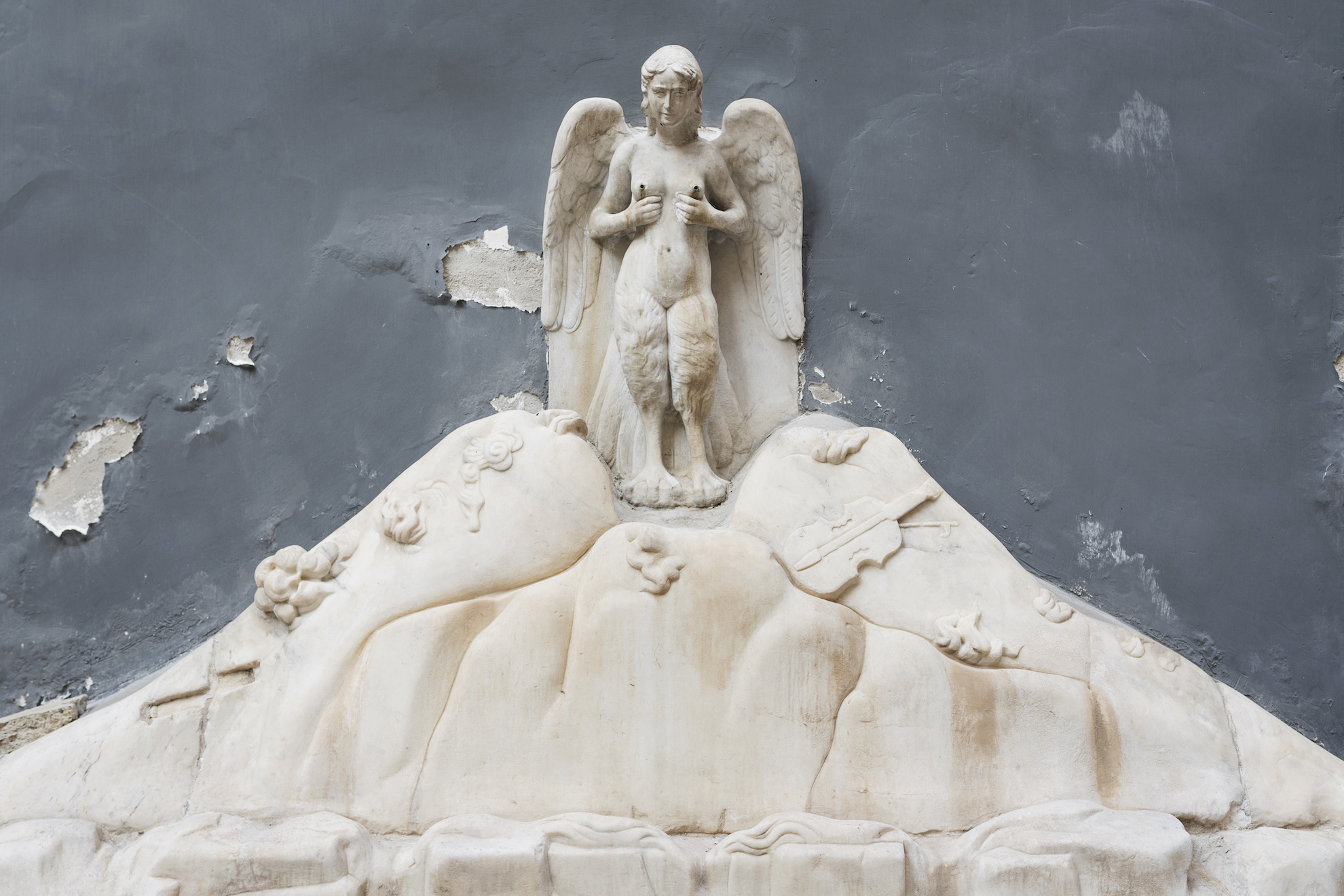
If we move our historic scope from the pre-roman Naples to the end of 1400, from Mercato square to the alleys around what is today Corso Umberto (also known as “rettifilo”) we will see the Spinacorona fountain, renamed by Neapoistas as the “fountain of tits”. The nickname is easly explained: in its calssic shape the siren has half the body of a woman and half the body of a bird and with the water coming out of her breasts the flames coming out of Mount Vesuvius. The symbolism is very clear: Parthenope, prfane guardian of Naples that constantly looks after the city even in the most dangerous and difficult moments. Today the statue has been replaced by a copy. The original one is visibile at the National Museum of San Martino that is easly reachable via subway from the the piazza Bovio trai station. Even piazza Bovio has a nickname given by Neapolitans and it is known a Borsa square.
The fountain in Sannazaro square | Ph. Anna Monaco - Trentaremi
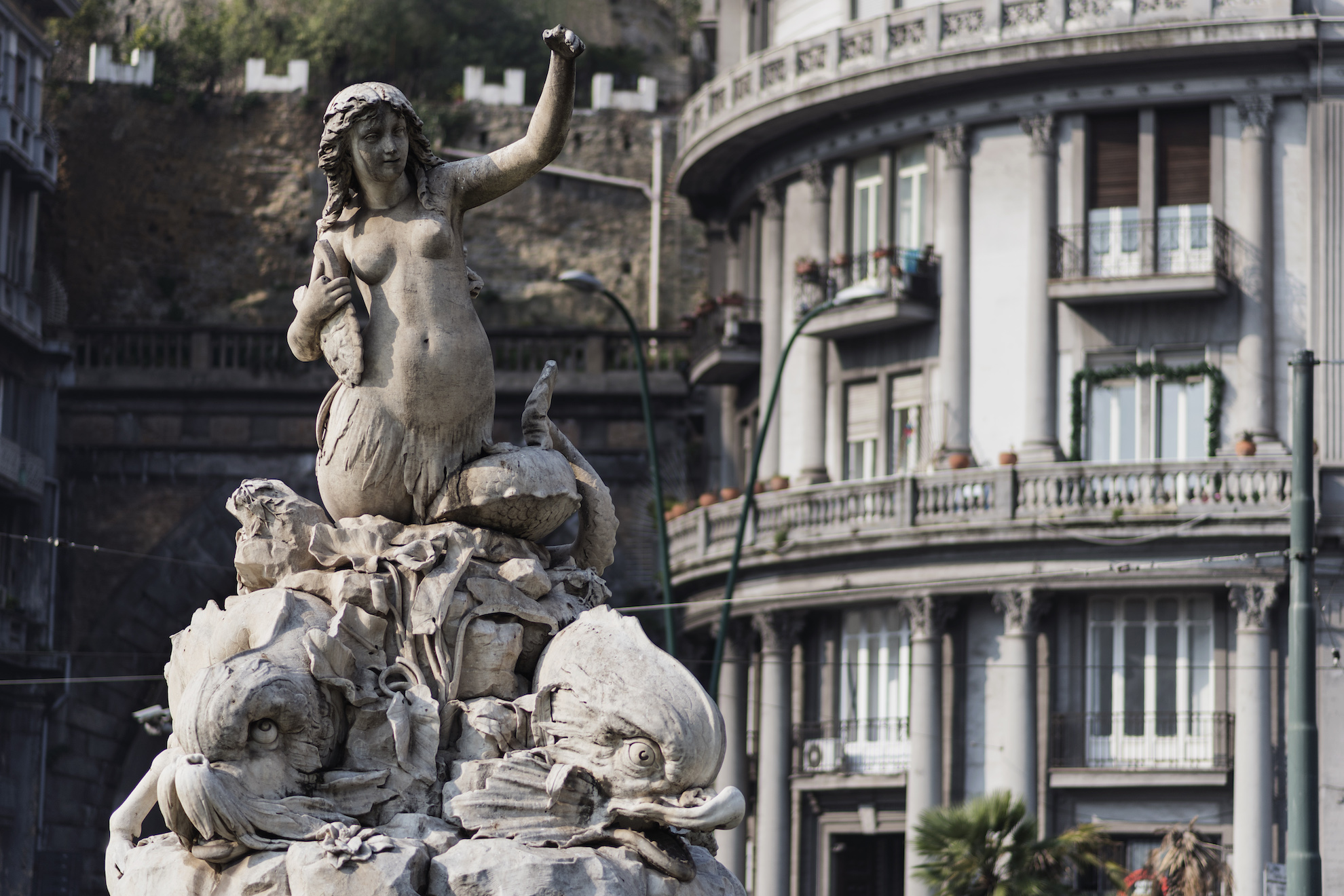
From Parthenope the guardian to Parthenope the triumphant. This is suggested by the statue that is located in Sannazaro square (before in front of the central train station). The statue was sculpted by Onofrio Buccini with the collaboration of Francesco Jerace and it presents a considerable amount of symbolic elents: in the right hand it holds a lyre that stands for richness and prosperity; the left arm is raised with a finger pointing to the sky in order to show the right path to the Neapolitan people; the fish tail is rolled up the body showing protection for Naples and its people.
Compared to the “fountain of tits” where the siren is rapresented in its classical shapes (a mermaid), the Parthenope sculpted by Buccini and Jerace is closer to the North-European symbology. A woman half human and half fish that is more related to water than air like instead happened at the times of Ulysses and Homer (a siren).
The murales of Francisco Bosoletti | Ph. Anna Monaco - Trentaremi
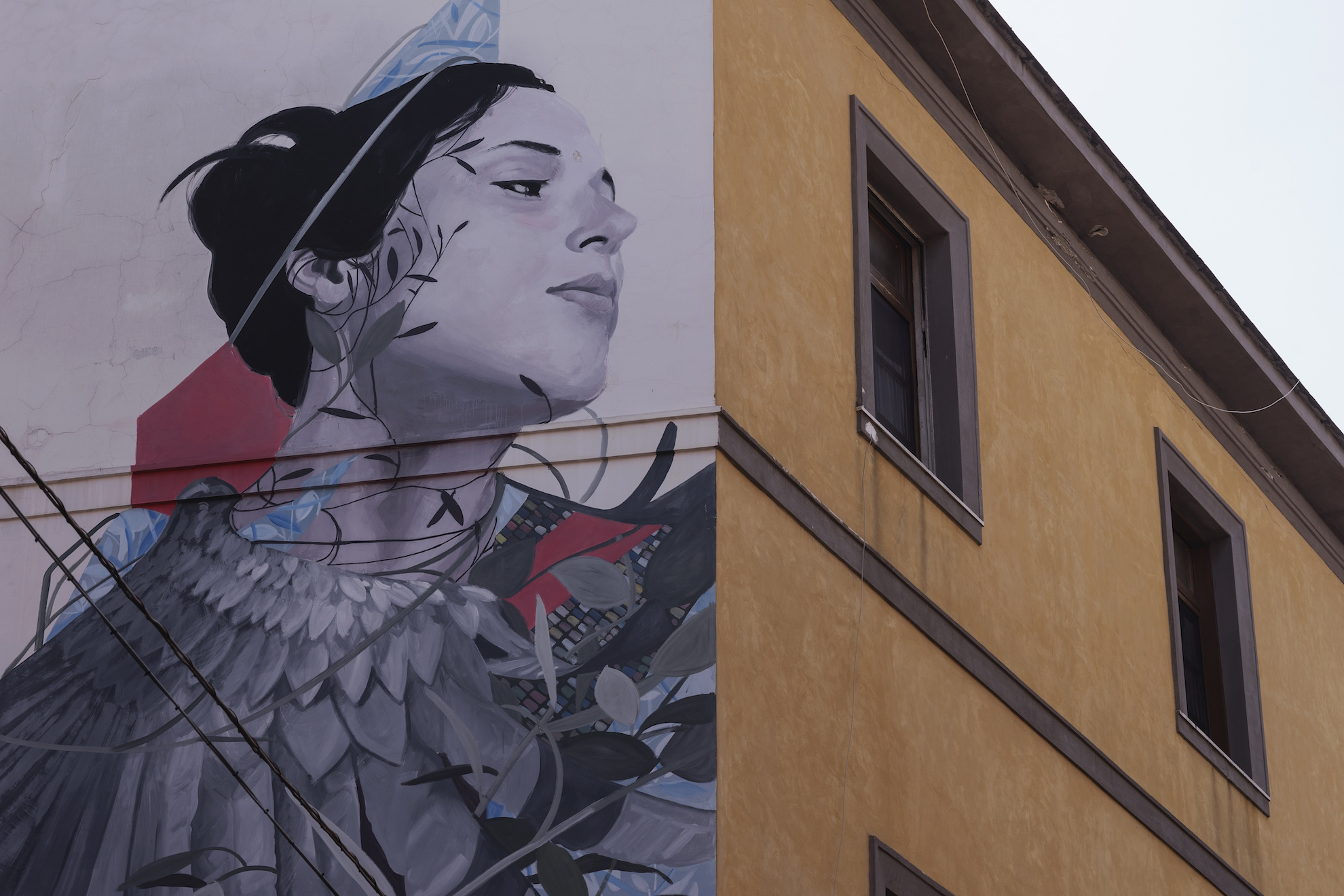
Bird of prey or fish, harpy or docile creature, the charm of Parthenope has never stopped to inspire artists along the centuries, even the contemprary ones. Through the streets of Materdei district (between Vomero and Rione Sanità) you can admire the Parthenope by Argentinian street artist Francisco Bosoletti. A huge murales of 15 meteres that covers the entire wall of a building in Salita San Raffaele. The murales rapresents Parthenope with black hair that satisfies every one: Greek and North European mythology. At the neck a necklace made of bird feathers that reminds the shapes of Spinacorona and a tail that has the shapes of a fish-woman covered by green leaves that remind of urban nature, the uncontested power of beauty, the breathe of a city that never stops.
From the Greek temples to the contemporary street-art, Parthenope continues to look after those who never forgot the history and the myth consigning this figure to legend.

